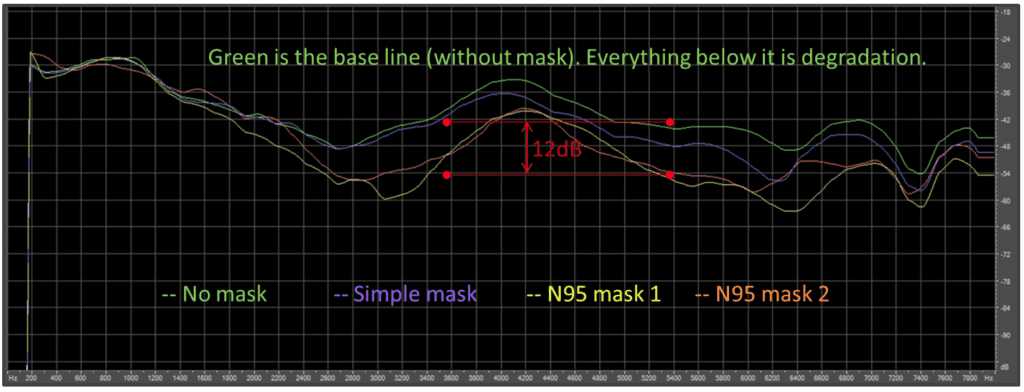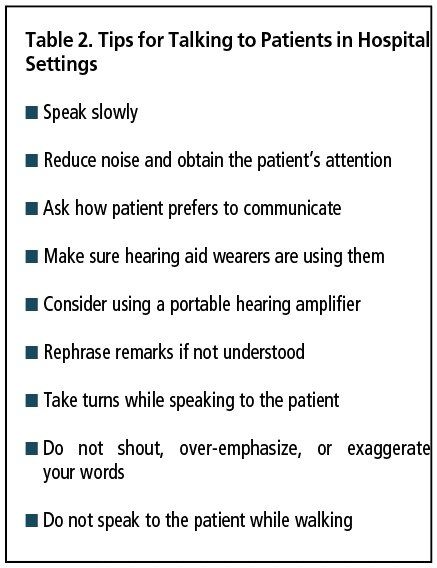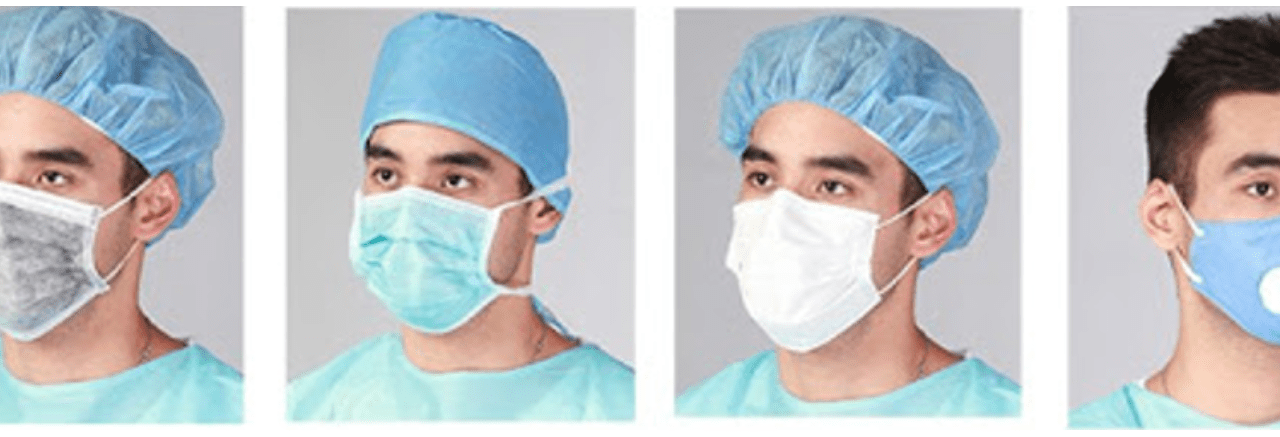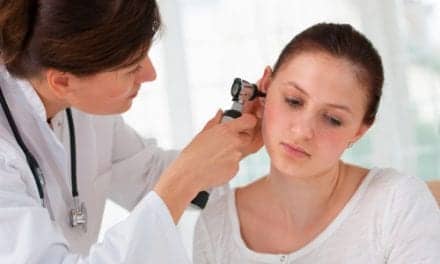Patient Care | May 2020 Hearing Review
Speech blocked by surgical masks becomes a more important issue in the Era of COVID-19
By Alexander Goldin, PhD, Barbara Weinstein, PhD, and Nimrod Shiman
The data show that each type of medical mask in this study essentially functioned as a low-pass acoustic filter for speech, attenuating the high frequencies (2000-7000 Hz) spoken by the wearer by 3 to 4 dB for a simple medical mask and close to 12 dB for the N95 masks. This means the speech quality degradation, in combination with room noise/reverberation and the absence of visual cues, renders speech close to unintelligible for many patients with hearing loss.
The pervasive toll of hearing loss on clinician-patient communication has become magnified with advent of the coronavirus (COVID-19 virus). In fact, as is shown in Figure 1, the trajectory of hearing loss and the infection fatality by age distribution tell a very important story—one most of us may not have as of yet considered. In short, hospitals, emergency departments, and intensive care units (ICUs) are now flooded with older adults with the COVID-19 virus. Many of the people who have fallen victim to the virus have hearing loss, are unaccompanied by family members, are frail, have multiple chronic conditions and are likely without hearing assistance. Estimates of the infection fatality ratio in the oldest age group (≥80 years) ranges from 8% to 36%, and sex-based data suggest that older men generally fare worse than elderly women in their ability to combat the virus.

We are all aware that a cornerstone of patient safety and quality healthcare is effective communication which allows patients to participate fully in their care. For communication to be effective, it must take place in a manner appropriate to one’s age, understanding, and communication abilities. Furthermore, medical information, when provided, must be complete, accurate, timely, unambiguous, and understood by the patient.1 It is well established that when patients can hear and understand the healthcare provider, they are much more likely to be compliant and follow physician recommendations and have their medical needs optimally met.
Since social, psychological, and environmental factors also influence speech understanding especially in hospital settings, older adults are at a great disadvantage in what is now the new normal.2 As is evident from Table 1, the hospital is a very stressful listening situation.3 It is novel (N), unpredictable (U), threatening (T), and the skill set (S) to cope tends to be compromised. Add to this the fact that clinical care is now often being delivered in settings which are extremely noisy and distracting—replete with alarms beeping and ongoing competing conversations between patients and providers.

Further, the struggle to understand speech for persons with hearing loss is now exacerbated by the masks which are a necessity to help minimize the spread of the virus. These masks pose two obvious problems for patients with hearing loss: 1) the patient cannot gain any cues from lipreading, and 2) the voice of the healthcare provider is attenuated and distorted. This brief study looks at the latter problem.
How Does a Medical Mask Impact the Speech Signal?
We decided to quantify the potential challenge to a listener’s comprehension at the acoustic level posed by the variety of masks being worn by healthcare providers. The Alango Technologies team based in Israel measured voice samples in an anechoic chamber as a function of the type of mask being worn (Figure 2). A GRAS head and torso simulator was used to play white noise though the artificial mouth, and the output acoustic signal was measured by a microphone at 2 meters distance.

Figure 3 summarizes the measurements. Only the differences between the green (no mask curve) and the others are important. Our findings were not unexpected but were unsettling. The data show that each mask essentially serves as a low-pass filter, attenuating the high frequencies (2000-7000 Hz) spoken by the wearer, with the decibel (dB) level of attenuation ranging from 3 to 4 dB for a simple medical mask and close to 12 dB for the N95 masks.

In short, the speech quality degradation, in combination with room noise/reverberation and the absence of visual cues, renders speech close to unintelligible for many.
Recommendations for Caregivers

We include in Table 2 a list of universal communication precautions we have created, and encourage each of you to share with your patients and colleagues in healthcare settings. For those patients who do not have a hearing aid or assistive listening device, we also strongly recommend use of commercially available and affordable voice enhancement technologies (eg, Alango BeHear ACCESS or BeHear NOW, Williams Sound Pocket Talker, etc) or hearing apps on smartphones (eg, Jacoti ListenApp) to help optimize speech understanding.
In the words of Helen Keller, it is our firm belief that “Alone we can do so little; together we can do so much.”
References
- Blustein J, Wallhagen MI, Weinstein BE, Chodosh J. Time to take hearing loss seriously. Joint Commission Jour on Qual and Patient Safety. 2020;46:53-58.
- Peelle JE. Listening effort: How the cognitive consequences of acoustic challenge are reflected in brain and behavior. Ear Hear. 2018;39(2):204-214.
- Pichora-Fuller MK. How social psychological factors may modulate auditory and cognitive functioning during listening. Ear Hear. 2016;37:92S-100S.


About the authors: Alexander Goldin, PhD, is the Founder and CEO of Alango Technologies in Tirat Carmel, Israel; Barbara E. Weinstein, PhD, is Professor & Founding Executive Officer of the Doctor of Audiology Program at City University of New York; and Nimrod Shiman, is an Audio Application Engineer at Alango Technologies.
CORRESPONDENCE can be address to Dr Weinstein at: [email protected]
Citation for this article: Goldin A, Weinstein BE, Shiman N. How do medical masks degrade speech perception? Hearing Review. 2020;27(5):8-9.






Yes, to several of the previous comments and more studies with filter plus mask plus faceshield …WTF!!! Then have me download on my smartphone, tablet, or paper form to answer the questions you want answered without me having to GUESS what you are saying under all that protection.
If only health care organizations respected the rules and intent of the ADA when it comes to providing “effective communications” in spite of hearing loss and other communication disorders. If they did — every face-to-face conversation would be served by an audio induction loop system. The seamless solution delivers a clear, filtered audio signal to all brands of hearing aids and cochlear implants. NO need for lip-reading. Hearing loop systems are the consumer-preferred choice for assistive hearing technology. For more information, visit the Hearing Loss Assoc of America’s website and make use of the “Get in the Hearing Loop” Tool Kit. https://www.hearingloss.org/programs-events/get-hearing-loop/hearing-loop-toolkit/
I recently got FDA cleared masks from Clear Mask. I would be very happy to see everyone wear these. But while they seem adequate for the general public, I doubt that medical people will find them, or any mask, sufficient. Yesterday, when I went to the dentist, he was wearing a surgical mask, covered by a second mask, with a transparent helmet on top of both.
Thank you for printing this article. A deaf/hoh must be able to see the face of the person speaking. A transparent mask with sufficient spacing and ventilation is the avenue to go. Since 3/10/20 I have contacted four leading see through/transparent face mask who are fully aware of the demand. By mid-July people will be able to order online, but the important part is spreading the word through advocacy that these masks are available. I have had many essential workers ask me where to get them. I pass along the information. Use social media, VRS, email, and a host of other means to spread the word. Remember not all hard of hearing can lip read, not everyone who is deaf or hard of hearing can use sign language, not everyone has good eyesight, but the face says a thousand words. Once we went “Green” interacting with people with masks is difficult and unsafe for the hearing loss person and thanks for pointing the muffling because I understand hearing people have problems with it also.
The solution is simple, and hearing impaired patients should be treated with the doctors and nurses wearing transparent masks so that lip movements can be seen by the patient!. There is not much by way of conversation from the patient who is in acute distress. The conversation is mostly one sided with the patient describing his physical discomfort (acute) rather than the need for the nurse to be explaining things that cannot be cognitively captured.
Transparent masks, because we are not zombies! Right?
Great, but where do you find transparent masks?
here is a great resource listing a number of sites with images to find different styles and manufacturers of clear masks; more and more are popping up as interested parties respond to the need
https://connect-hear.com/knowledge-base/clear-masks-and-face-shields-to-order/
Transparent masks would likely be made of plastic, and not allow air to pass through very well, making breathing extremely difficult for the wearer. Additionally, elderly patients may have less than perfect vision and/or not be able to read lips. Even if someone has good vision and can read lips, medical terminology can be difficult to understand…so, while I can appreciate your thinking, we definitely need a combination of methods to better communicate with these patients.